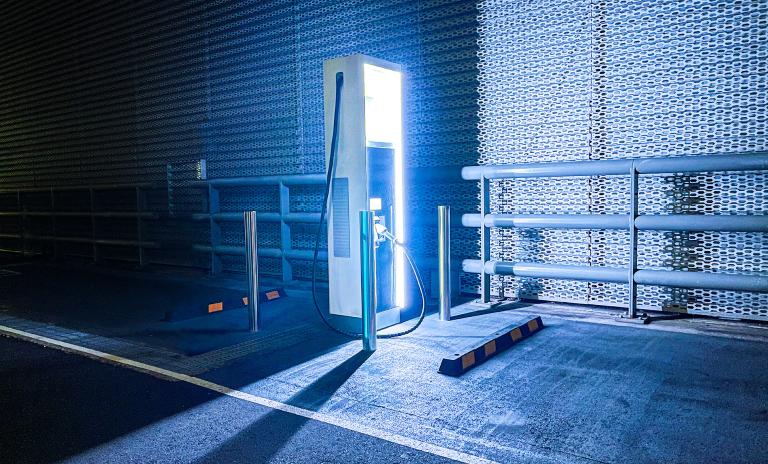EV Charging Business Model
The EV charging market is expected to consolidate from 2025. How can players make sure they come out ahead? Learn more in Roland Berger’s study.


By Ron Zheng and Tim Longstaff
After the energy price shock resulted in a subdued start to the year, the EV and EV charging markets sparked back into life in the last months. Almost all countries featured in the fourth edition of Roland Berger’s EV Charging Index hit record-high scores, with several leaping up the rankings. Also covered in the edition: customer behavior is changing and OEM's strategy for EV charging infrastructure is showing regional differences.

The global electric vehicle (EV) and EV charging markets bounced back strongly after a turbulent first half of 2022, with significant improvements across the board. After a slow start to the year caused by the outbreak of war in Ukraine and the subsequent energy crisis, several key market indicators hit record highs between July and December – as energy costs stabilize. EV sales and charging infrastructure scored particularly well, the latest edition of Roland Berger’s EV Charging Index shows. The surge was largely driven by the rapid expansion of charging networks, as well as strong improvements in key markets, such as the United States. China once again led the way, topping the rankings with a score of 82 (out of 100). But the gap between China and the chasing pack narrowed considerably compared to previous editions, with Germany (74), the United States (73), the Netherlands (69) and Norway (65) now catching up fast. All the top five performers achieved their highest score to date.
"Overall, 56% of respondents said their range anxiety was high or very high."
The Index, covering 30 markets in five regions and 31 indicators, is based on industry interviews, primary research and a survey of 16,000 participants from all regions. As well as scores and rankings, the fourth-edition report covers the latest developments in the EV and charging markets, as well as featuring analysis on four topical areas: factors affecting interest in EVs; public EV-charging networks; changing customer behaviors; and regional differences in OEM-branded network strategies. The full report can be downloaded here (summary below). For the first time, the edition is also enriched with expert interviews on specific markets (see overview at the bottom of this page).
Note: Some rankings have changed due to changes in the scoring methodology implemented in 2025
While Germany and the United States were the best performers in the top five, there were plenty of improvements elsewhere. At the other end of the table, Malaysia (41) and Indonesia (41) both jumped by 12 points, and even bottom-of-the-table Saudi Arabia leapt from 16 to 27 points. The improved performance of countries across the Middle East and Southeast Asia helped push up the average country score from 45 to 51 points, indicating a healthy and growing global EV charging market.
Several recent events in the EV market have helped to drive this overall increase. A key factor is that a price war has broken out. While the choice of higher-price segment EV models has always been strong in global markets, the pickings in the lower-price segment have been slim. OEMs have been slow to fill this gap, but are now acting. Tesla, for instance, is cutting prices on its existing models and is exploring a low-cost option, while BYD is set to offer its basic Seagull model from USD 12,000 in China.
Developments in the charging market itself are also having an impact. For example, in late 2022 Tesla began exploring opening up its much-envied and fast-expanding supercharger network to all EVs, while GM announced a major push into holistic charging services through its new subsidiary, GM Energy.
But perhaps the biggest development was the announcement of a series of new laws and investment in electrification by the US government. Its Inflation Reduction Act (IRA), National Electric Vehicle Infrastructure (NEVI) program and CHIPS and Science Act will together have a major impact on EV sales, charging infrastructure and semiconductor capacity, and provide billions in funding.
"More than 70% of premium-brand EV owners say that an own-brand network will significantly influence their decision to buy from that brand."
The features in the fourth edition of the Index look at four areas that are key to understanding the current growth in EV charging. First, with global EV sales penetration reaching a record high in 2022, we look at how the factors affecting interest in EVs differ across the regions. We outline the scale of the sales rebound and assess the impact of the war in Ukraine.
Second, we assess the drivers behind the rapid expansion of public EV-charging networks, from new technologies to convenience, and discuss public perceptions of fast charging. Third, as global public-charging penetration rates hit 90%, we analyze changing customer behaviors, finding that range anxiety is still a major problem. And lastly, we look at how OEMs' strategies regarding EV charging infrastructure are becoming increasingly clear and showing regional differences.
For more information on the rankings, market developments and focus feature subjects, please download a copy of the full report.
Register now to download the full study EV Charging Index 2023 with key findings, new developments as well as future challenges for players in the automotive industry. In addition, you will receive regular insights into electronic mobility topics.